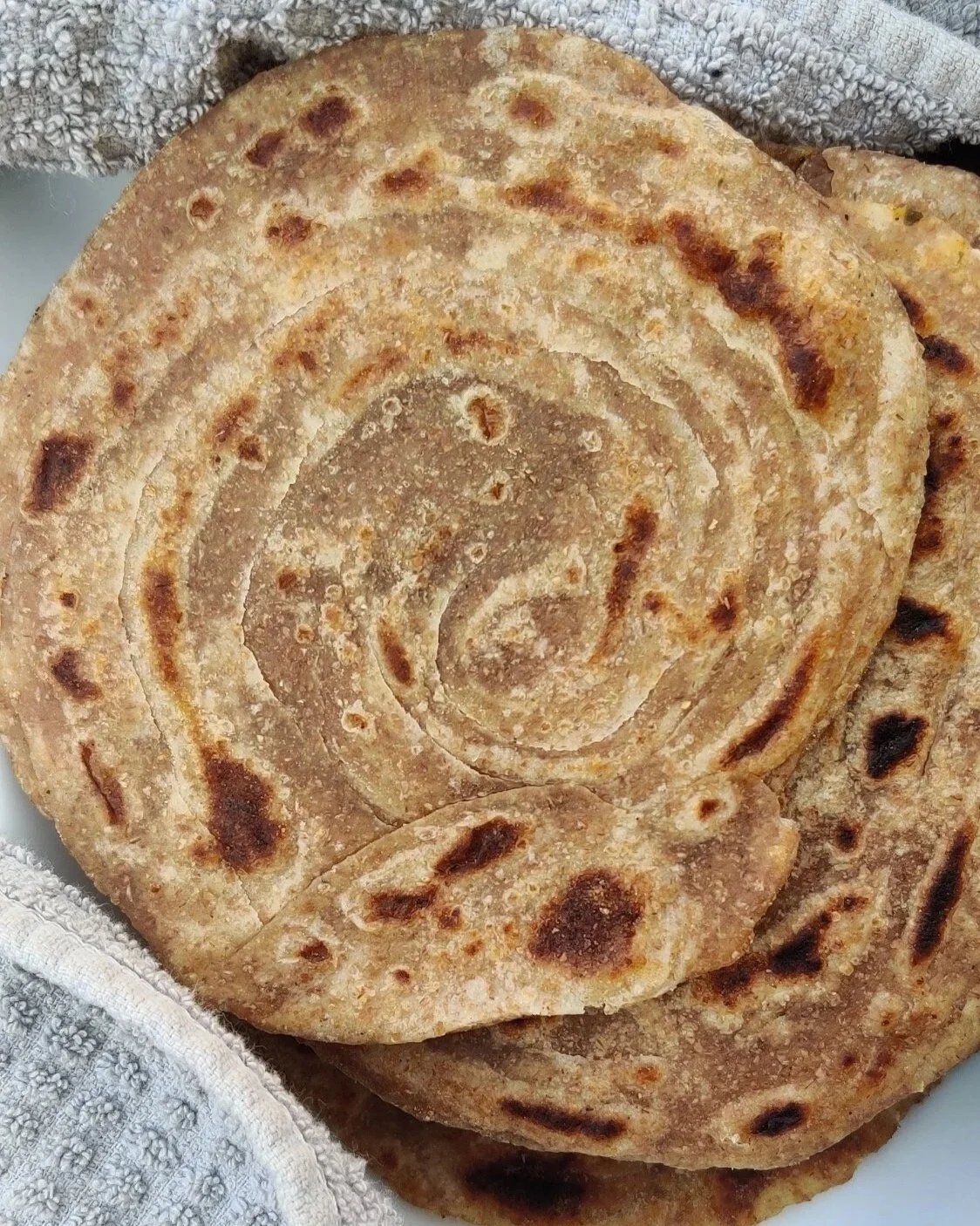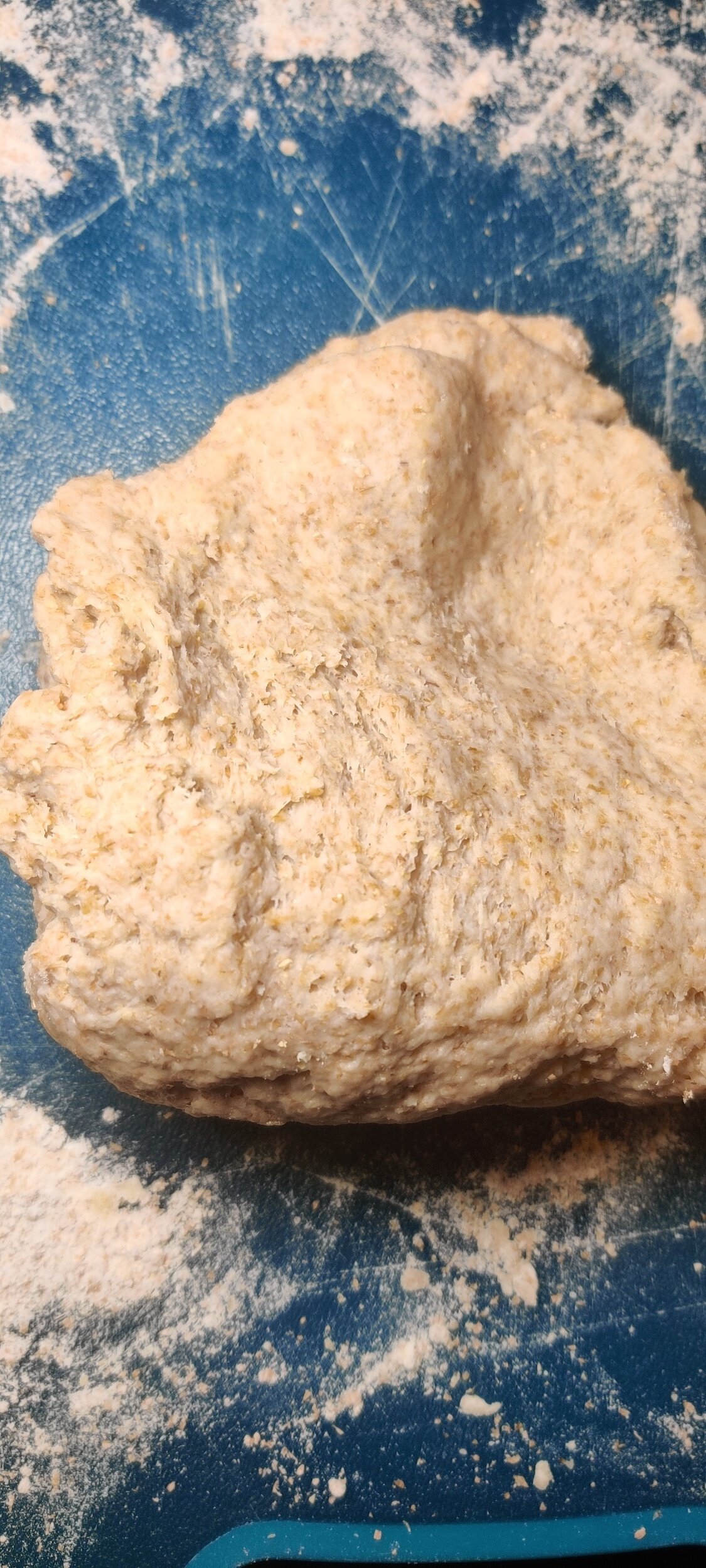How to Make East African Chapati – Step-by-Step Recipe
Chapati is one of the most beloved and widely eaten flatbreads in East Africa. Popular in countries like Kenya, Uganda, and Tanzania, it’s a staple at family dinners, street food stalls, and festive gatherings. While chapati originated from the Indian subcontinent and was introduced to Africa through trade and migration, it has evolved into a distinct East African version that is softer, flakier, and richer than its Indian counterpart.
What sets East African chapati apart is the generous use of oil or ghee in both the dough and the cooking process. This gives the bread its signature soft texture and golden, flaky layers. When made well, chapati is slightly crisp on the outside, soft and chewy on the inside, and perfectly seasoned with just the right amount of salt and fat.
In many African homes, bread is more than just food. It plays an important cultural role at the table and is often shared during meals as a symbol of hospitality. Chapati in particular is used to scoop up stews, beans, or vegetables, making it an essential part of everyday meals and celebrations. For many, learning to make chapati from scratch is a family tradition passed down through generations.
I originally created this recipe to pair with a mashed kale stew, but it's incredibly versatile. Chapati is also perfect with curries, lentils, grilled meats, or simply served as a side with a variety of other dishes.
If you’ve ever ended up with dry or tough chapatis, this recipe offers a few simple but essential tips. Be generous with the oil or ghee, knead the dough thoroughly to build elasticity, and give it time to rest before rolling. For extra flaky layers, try the folding and coiling method described in the recipe. These steps make a big difference in achieving that classic East African chapati texture.
Whether served with sukuma wiki, lentils, or a cup of tea, this chapati brings the flavor and comfort of East African home cooking to your kitchen.

How to Make East African Chapati – Step-by-Step Recipe
A soft, flaky flatbread that's a staple across East Africa. This chapati is easy to make, incredibly versatile, and perfect with stews, curries, or on its own.
Ingredients
- 1 cup whole-wheat flour (you can substitute all-purpose flour if desired)
- 1 cup all-purpose flour, plus extra for dusting
- 1 teaspoon salt
- 2 tablespoons olive oil or ghee, plus extra for brushing
- ¾ cup hot water
Instructions
- In a large bowl, combine the whole-wheat flour, all-purpose flour, and salt.
- Using a wooden spoon or spatula, mix in the oil or ghee. Gradually add the hot water in two parts, mixing until a soft, elastic dough forms. Don’t skimp on the oil or ghee, this helps prevent dry chapatis.
- Turn the dough out onto a lightly floured surface. Knead for about 10 minutes until smooth and pliable.
- Divide the dough into 8 to 10 equal portions, depending on your preferred chapati size.
- Cover and let rest for 10 minutes.
- On a floured surface, roll out each dough ball into a round shape, similar to a tortilla but slightly thicker.
- Lightly brush each side with oil or ghee, then dip both sides in flour, shaking off any excess.
- Heat a dry, non-stick pan over medium-high heat.
- Place one chapati in the pan and cook for about 30 seconds, or until brown spots begin to form. Flip and cook the other side. Repeat with the remaining dough.
- If you'd like to create distinct layers inside your chapati, follow these extra steps after dividing the dough:
- Take each dough ball and fold it back and forth like a fan or piece of paper.
- Alternatively, roll it up tightly like a carpet.
- Coil the folded dough into a spiral shape (like a cinnamon roll), then cover and let rest under a damp towel for 30 minutes.
- After resting, gently press each dough coil flat and roll it out again into a round shape.
- Lightly brush both sides with oil/ghee, press into flour, and shake off the excess.
- Cook as described above.
Notes
Serving and Storage Tips
- Serve chapatis warm, ideally right off the pan.
- To store, wrap them tightly in foil or a clean cloth to keep them soft and prevent drying out.
I am not a certified nutritionist and any nutritional information on dontmissmyplate.com should only be used as a general guideline.
Chickpea Curry with Flatbread
There's nothing like a hot curry served with warm flatbread and a condiment to cool the tongue. I love chickpea curry, and even if you’re an avid meat eater if seasoned right you’ll love it too. It's a good transitional dish if you're trying to eat less meat and adopt a plant-based diet.
Chickpea curry and flatbread work for weeknights, weekends, rainy days, winter days. The meal lacks much of the grease and calories we associate with other comfort food.
Chickpeas have several health benefits such as improving digestion and reducing cholesterol, while curry helps reduce inflammation and boosts your immune system.
If you're intimidated by making bread, this flatbread shortcut offers an easy fix and delicious side to your curry.
Ingredients
1/2 large red onion, chopped
1 heaped teaspoon garlic, minced
1 teaspoon cumin
2 bay leaves
1/2 teaspoon salt
1 tablespoon hot Madras curry powder
1 teaspoon garlic powder
1 teaspoon chili powder
1 teaspoon black pepper
1 teaspoon parsley
1 teaspoon cinnamon
1/4 teaspoon cardamom
1/4 teaspoon cloves
1 teaspoon coriander
1 teaspoon chili flakes (optional)
1/4 cup marsala cooking wine
1 vegetable bouillon
2 cups water
1 cup coconut milk
1 tablespoon butter
1 tablespoon olive oil
2 tablespoons tomato paste
1 cup peeled tomatoes in sauce
1 teaspoon spicy mango chutney (I used Camella’s Kitchen’s)
1 tablespoon scotch bonnet pepper hot sauce (optional)
1 teaspoon chili flakes (optional)
Flatbread:
1 cup plant-based yoghurt
1 cup whole-wheat flour
1 tablespoon garlic and herb seasoning (optional - I used Primal Palate)
1 teaspoon baking powder
Video Tutorial
Instructions
Prepare your flatbread. You can store it in the warmer drawer until the curry is ready.
Mix the flour, baking powder, herbs, and yoghurt to form a soft dough. It may be slightly sticky. Using your hands or a rolling pin on a lightly floured surface, divide the dough into 4 parts and shape into flat, circular discs.
Brush them on one side with olive oil. On high heat in a greased skillet, cook the flatbreads until bubbles start to puff up, for about 2 minutes. Flip over and cook for another 1-2 minutes.
Prepare your curry. In a pot, sauté the onion and garlic in the butter and olive oil for about 3 minutes, until the onions start to soften.
Add your spices, cook for about 2 minutes until fragrant.
Add the tomato paste, the cooking wine, the mango chutney, vegetable bouillon, water, coconut milk, peeled tomatoes and salt. Mix and reduce heat, simmer for about 5 minutes.
Add the chickpeas, bay leaf, chili flakes, and scotch bonnet sauce, simmer on low heat for another 20 minutes. Mix occasionally to help thicken the curry.
Serve hot with flatbread and chopped pineapples and bananas on the side. Enough for 2-4 people.








